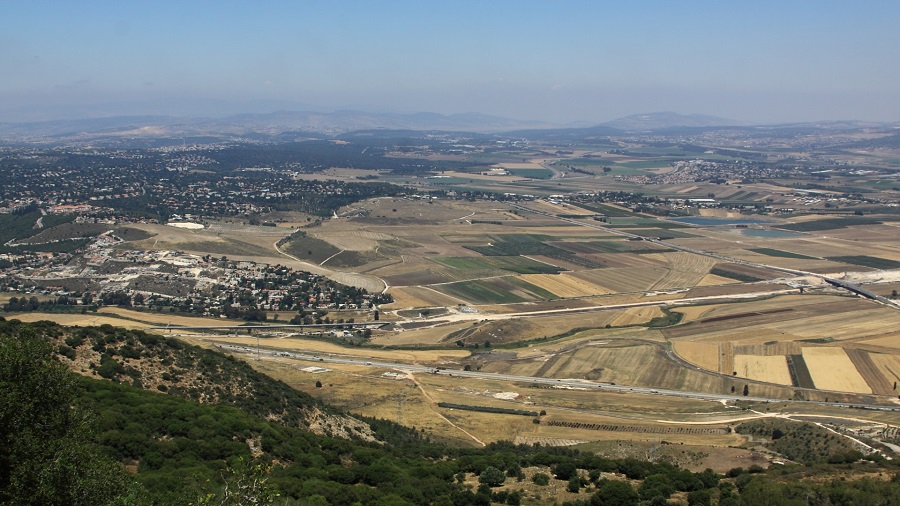Megiddo, Haifa, Caesarea
The beautiful Jezreel Valley in central Israel has some important history.

That bump on the map of Israel’s coast is where Mount Carmel meets the sea. It’s a ridge around 10 kilometres long, with the modern city of Haifa to the north, and the verdant Jezreel Valley to the east. This is where Elijah called down fire from heaven to show King Ahab and Queen Jezebel that there was only one true God who ruled Israel (1 Kings 18). From the top of Mount Carmel you can see the hills of Nazareth in the distance.
In ancient times, the main north-south road ran through the Valley of Jezreel, where it met the road heading eastwards. Long before Israel lived in the land, the hilltop at Megiddo was a crucial military outpost. Megiddo is now a Tel: 26 layers of civilization, each built on the ruins of the previous one. Tel Megiddo stands as a testimony to the devastation of human rule, of how each conqueror in history crushed the previous one and built on their ruins.
Solomon used Megiddo as a military outpost (1 Kings 9:15). In the ninth century BC, Ahab built a tunnel to supply water to the fortress. The shaft is 75 feet deep, and a tunnel 210 feet long (made by two teams working from opposite directions).
But Megiddo became a focal point of Israel’s demise. The last good king of Judah, was killed there (2 Chronicles 35:20-27). The following kings were puppets of other powers, so Josiah’s death came to mean the loss of their kingdom (compare Zechariah 12:11). The death of the good king made no sense.
Some Jewish writers imagined a day when God would fight for Jerusalem, overthrowing the nations and restoring his reign. One writer imagined this big battle not at Jerusalem but at the Mount of Megiddo. Har Megiddo in Hebrew became Armageddon in Greek (Revelation 16:16). Perhaps we’re meant to see a parallel between Josiah and Jesus who was also killed by the nations—the greatest injustice of all time. If Jesus’ death was the end, he would be just one more failed king, slaughtered by the human rebellion against God. But Jesus’ death was not the end. God overruled. Jesus overcame evil and death. He is enthroned as our king: “I am the Living One; I was dead, and now look, I am alive for ever and ever! And I hold the keys of death and Hades” (Revelation 1:18).
On the coast south of Mount Carmel is another Caesarea, sometimes called Caesarea Maritima. The ruins of Herod the Great’s constructions here are clearly visible. A stone inscription verifies that Pontius Pilate was proconsul. Cornelius was stationed here (Acts 10:1, 24; 11:11). Paul used this port (Acts 18:22; 21:8, 16). He spent two years in prison here (Acts 23:23-33; 25:1-27). This port was the launching pad for the gospel beyond Israel.
Further down the coast is Tel Aviv, a large city that was crucial in the reestablishment of Israel as a nation last century. It took its name from Ezekiel 3:15. It joins the ancient port city of Yafo (also spelled Jaffa or Joppa) where Solomon imported timber for the temple (2 Chronicles 2:16). This is where Jonah set sail for Spain, because he did not want Nineveh (the capital of their arch-enemy Assyria) to repent (Jonah 1:3). It’s also where Peter saw the vision asking him to eat unclean things (Acts 10:1-33). In the Middle Ages, the crusaders landed here to free Israel, so the ruins are iconic.
Seeking to understand Jesus in the terms he chose to describe himself: son of man (his identity), and kingdom of God (his mission). Riverview College Dean
View all posts by Allen Browne





